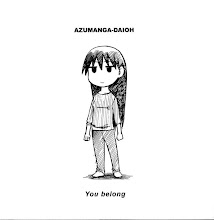Rascal Does Not Dream Of Devil Kohai (青春ブタ野郎はプチデビル後輩の夢を見ない) is a the second volume of the Rascal Does Not Dream light novels written by Kamoshida Hajime featuring artwork by Mizogushi Keeji. The second volume was originally release in 2014 and in English in 2020.
The following synopsis may spoil some aspects of the first novel in the Rascal Does Not Dream series, if you do not want to ruin that story stop reading until you have.
Book One: Rascal Does Not Dream Of Bunny Girl Senpai review here!
The time spent with Mai trying to help her overcome her 'adolescent syndrome' that was causing her to disappear from existence, Sakuta has been able to become close to the desirable celebrity senpai. As promised she agrees to begin dating him. Floating on the air, Sakuta knows his future is bright and full of love. He wakes up the following morning to find himself repeating the same day, the day he has lunch with Mai and she accepts his love and attention. Knowing what to expect, he effortlessly coasts through the day and success in love, only to wake up the next day to repeat it yet again. He searches out his friend, Rio, who helped him approach Mai's problem from a logical standpoint, to see if she could offer more assistance with his time loop problem. She suggested that someone else is aware of the looping and is controlling it, a physical manifestation of the Laplace's Demon theory, the theory of an all knowing observer. He finds the demon in the form of a first year student named Koga Tomoe, a girl who caused him some grief in his efforts to save Mai.
Koga is struggling to maintain her position in her classes popular girl cliche. The leader of the group is demanding and attentive, requiring its members to constantly be in contact via Line. A third year baseball hottie has confessed to Koga, causing her undue strain, as the leader of her cliche is interested in him herself. Reading the air of her group, she understands the danger her membership would be in if the leader knew the boy she liked was interested in Koga instead. Once Koga explains the situation to Sakuta the loop appears to be broken, but not before the change in interactions that day leads Mai to misunderstand their encounter, refusing to have lunch with Sakuta, therefore denying him the chance to have her confirm their status as a couple. Sakuta is able to calm Mai down after partially explaining the delicate situation about the kohai. Unfortunately, Koga's suggestion to solve it all together would require Sakuta to pretend to be her boyfriend. Now Sakuta has to convince not only Koga's friend group but the entire school that they are dating, even though he very publicly confessed his love for Mai. Can he pull it off convincingly enough to make the baseball star back off, preserving Koga's roll in her classroom? Will he ever be able to have a real relationship with Mai? Will Mai even have the patience to wait for a fool on his errand?
The ending of the first book sets the story up to run fluidly into the second book. While I am not a fan of the movie Groundhogs Day in general, the way this story handled time looping was done quite well. The looping its self is not a major presence in the story, more an ominous threat constantly in the background, as Sakuta is always aware that it could happen again. Instead the stories real focus is on Koga's strain to fit in with her new group. She moved from a different part of the country, completely remaking herself, in an effort at a life she desires. The helplessness she feels when all of that effort is on the verge of destruction at things out of her control brings her dilemma to the front. Outside of the idea that Sakuta is the central figure in the stories, Koga picks him out of those around her as the guidepost of her revisions due to the honest and open nature of his personality.
The supernatural aspects of this book were even more subdued than the original story. The majority of the story is a developing relationship between Koga and Sakuta and a reset on progress between Sakuta and Mai. The driving force to get to the end of this book is to really see if he can make up for all of the back peddling in his Mai courtship. Koga's character is fleshed out quite a bit, given she went from a small part in the first book, to being one of the main focal points in this book. Again, the joy of this series is the finely crafted story telling and interaction between the characters. It really have two parts; the supernatural mystery and more importantly the humanity between these realistic characters. Living their lives, that also happen to have some unexplainable weirdness continually jeopardized their mundane existences.
Book Three: Rascal Does Not Dream Of Logical Witch review here!









No comments:
Post a Comment